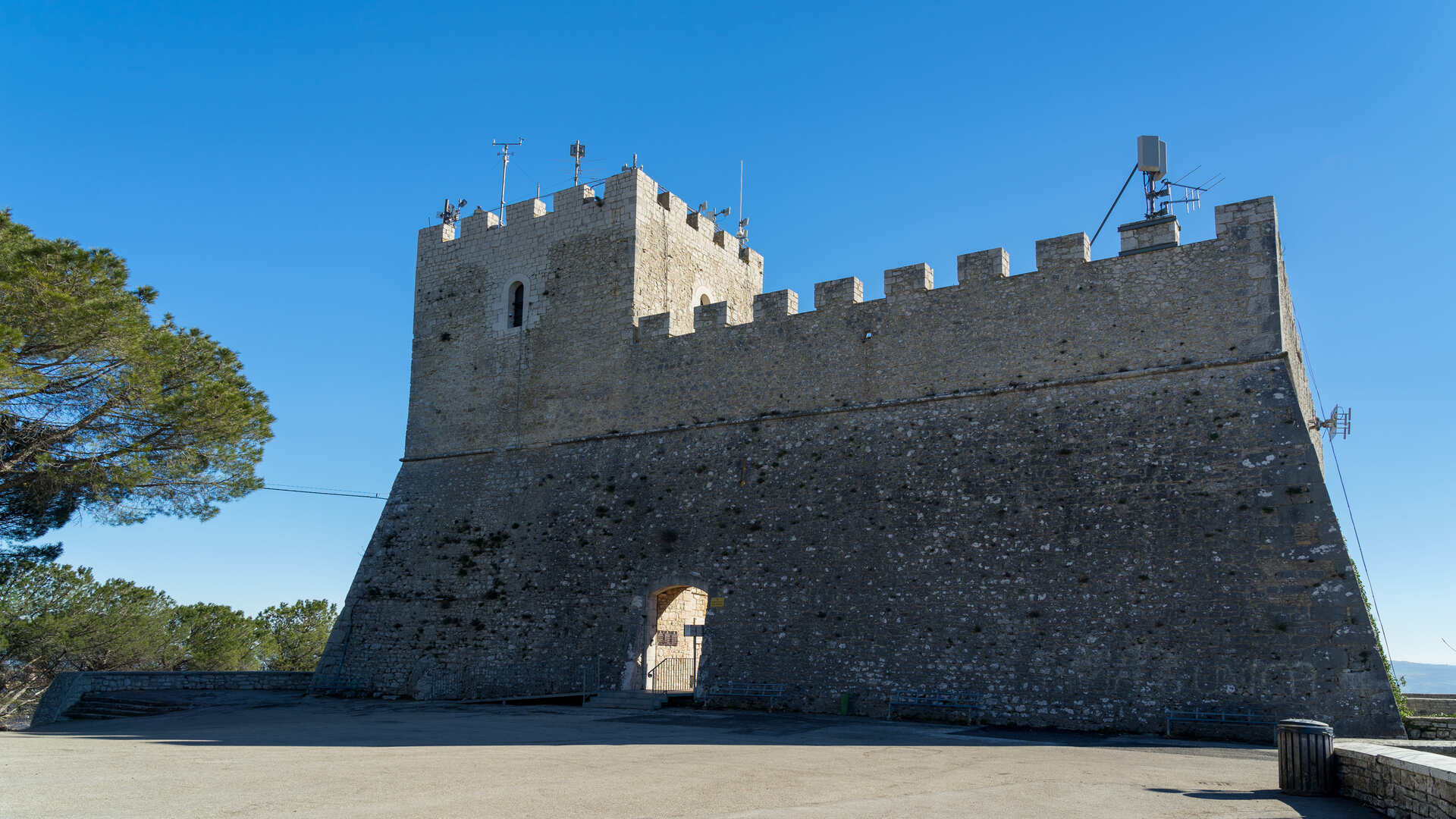The castle Monforte rises with a quadrangular plant on the calcareous rock of the mountain, it rises to escarpment with of the circular towers places to the edges and with a great rectangular tower, a mastio. The windows are few and square, at equal distances. The walls end with Guelph merlons. The castle was built in 1100 by Ugo II of Molise, above a Samnite settlement. The whole fortification underwent important
changes after the earthquake of 1348 and took its present shape in the
middle of 1400 by Nicola di Monforte, who later completed the fortification of the castle and of the town of Campobasso.
The geographic position of the feud of Campobasso was the best in absolute that allowed the control of the junction between Abruzzo and Puglia and that between the kingdom of Naples and the Adriatic Sea.
The Count of Campobasso built, among other things, an artificial moat, a beautiful entrance portal and the drawbridge. To the same one is owed also the completion of the four cylindrical towers, of visible Aragonese style, wanted for better protecting the four angles of the complex. To better defend the castle, it was also built a walkway for the patrols around the top of the mountain, interrupted by circular towers, one of which is still present near the church of Santa Maria Maggiore.
At the beginning of the 16th century, with the abandonment of the Monforte family, the complex underwent a strong downsizing and became a prison.
To accompany the visitor to the discovery of the Castle of Campobasso some popular beliefs: it is said, for example, that one of the rooms of the dungeon was the room of torture and that from here started a secret passage, today walled up, that descended along the side of the hill arriving until outside the village. Another legend says that passing through a small door on the north side of the castle you could access another underpass, which connected the building to a hill, still called San Giovannello, which is outside the city center: this was an underpass that served as a secret way for a possible escape from the enemy.
22 I Luoghi della Storia - Castello Monforte Campobasso
Back 22 I Luoghi della Storia - Castello Monforte Campobasso

